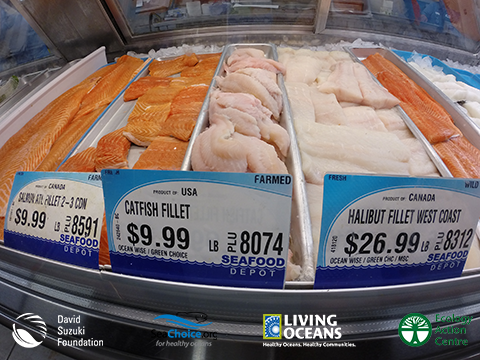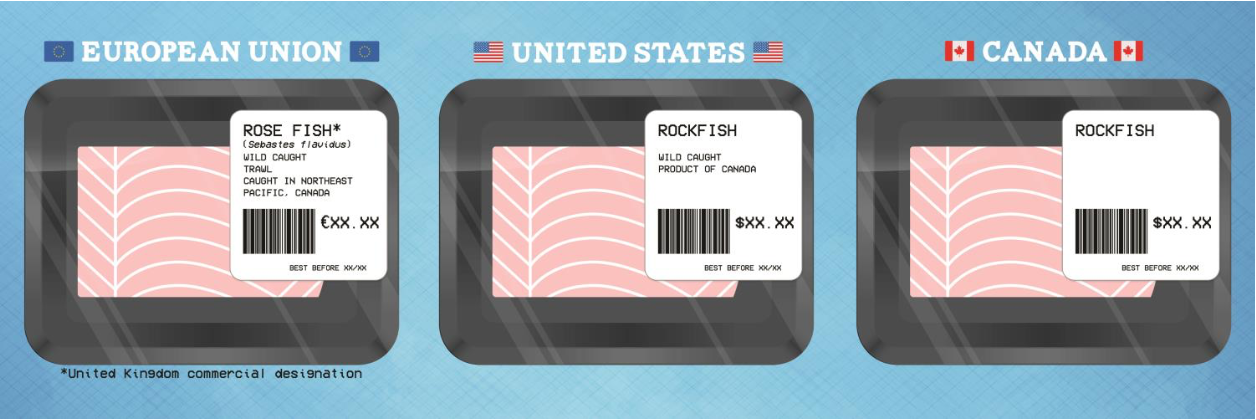What if you were told the “tuna” you’ve been eating all this time isn’t actually tuna? In fact, 59% of tuna sold in the Canadian markets are mislabeled, making it the second most commonly mislabeled seafood, with red snapper sitting at the very top of the list (87% mislabeled).
As seen below, compared to Europe and US, Canadian seafood labels are very much misleading and uninformed for consumers. Luckily, the Canadian Food Inspection Agency is currently reviewing the laws and regulations for proper Sea Food labels.
As alarming as “mystery meat” sounds, it’s not too far off to use as a description for Canadian seafood. “Rockfish” as seen above, is nothing but a common name used for over 100 different species. David Suzuki Foundation is currently holding a petition for seafood labels to include the Scientific name, geographic origin, production methods, and additives used.

image from http://action2.davidsuzuki.org/seafood-labelling
A study conducted by University of Guelph found that 84% of fish sold as “white tuna” were actually a closely related species called escolar. However, it is known that escolars are unable to digest gempylotoxin (type of wax, similar to mineral oils found in escolars’ diet), which means that when it is consumed, it can cause various digestive problems such as diarrhea and abdominal pain.
Enforcing regulations on seafood providers to have proper labeling will not only help us make healthy choices for ourselves and our families, it will also help us to make environmental and economical friendly choices by supporting locally farmed seafood. Sign the petition today!
Lisa Liang


2 responses to “Canadian Seafood Fraud”